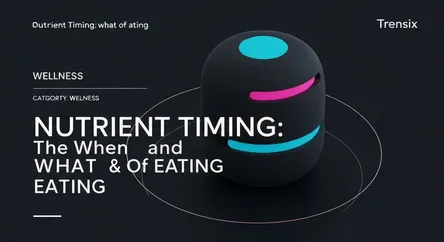Wellness
Nutrient Timing: The When and What of Eating

Learn about nutrient timing, the strategy of eating specific nutrients at specific times around your workout to improve performance and recovery.
What is it?
Nutrient timing is the strategic consumption of food, particularly carbohydrates and protein, in and around exercise sessions. The goal is to improve athletic performance, enhance recovery, and maximize the body's response to training, such as building muscle or losing fat. A popular concept within nutrient timing is the "anabolic window," a theoretical period of 30-60 minutes post-exercise where the body is believed to be exceptionally receptive to nutrients for muscle repair and glycogen replenishment.
Why is it trending?
The strategy is popular in fitness and athletic circles because it promises to optimize the results of training. Proponents believe that consuming specific macronutrients at precise times enhances muscle protein synthesis, minimizes muscle breakdown, and restores energy stores more effectively. This idea of a "window of opportunity" to supercharge recovery and muscle growth has been heavily marketed, leading many to believe that when you eat is as critical as what you eat for achieving fitness goals.
How does it affect people?
For elite athletes, nutrient timing can provide a competitive edge by accelerating recovery and optimizing performance. However, for most people focused on general health, weight loss, or fitness, its importance is often overstated. Research suggests that total daily calorie and protein intake are more crucial than precise timing for muscle growth and recovery. While consuming protein and carbs after a workout is beneficial, the "anabolic window" is now considered to be much wider than previously thought, making overall consistent nutrition the priority.